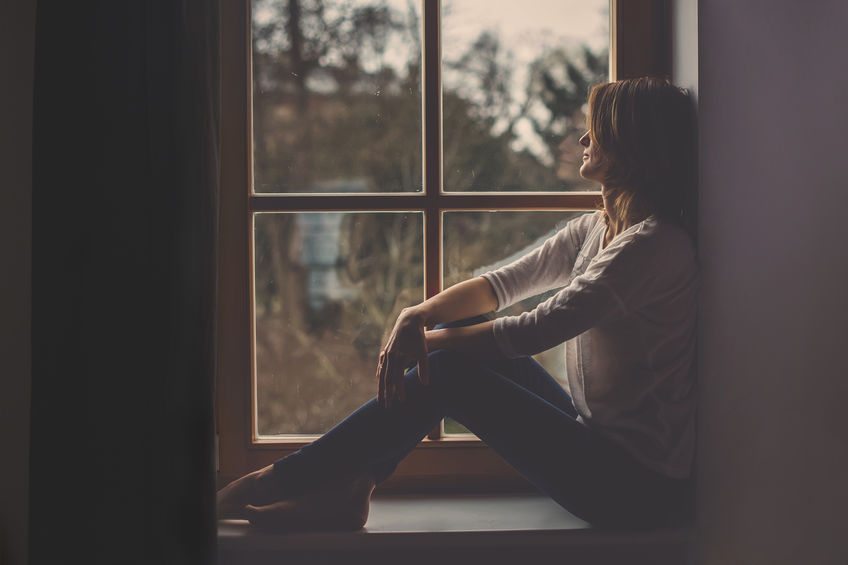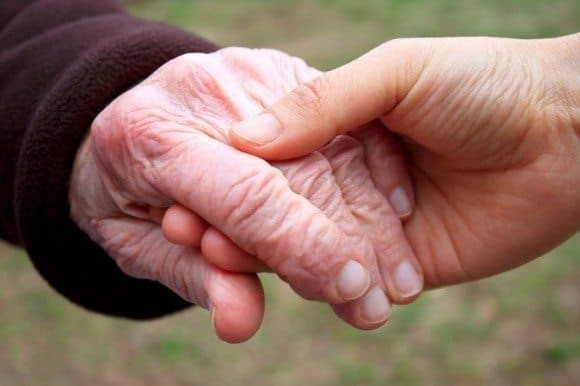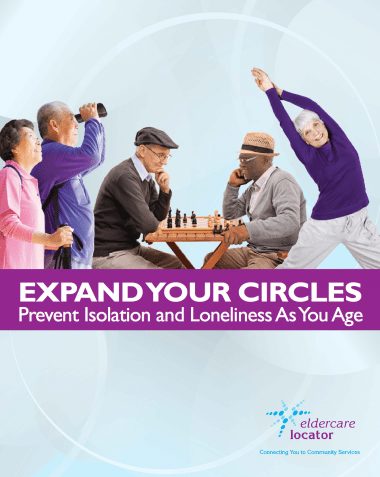Estimated reading time: 8 minutes
Loneliness and social isolation are becoming problems of epidemic proportions. The statistics are chilling. Today, 25 percent of Americans have no one with whom to discuss matters important to them.
What is even scarier is that loneliness is killing us.

Studies show that loneliness and social isolation are associated with increased risk of early mortality (1). Being socially connected increases not only psychological and emotional well-being but also has a positive influence on physical health (2).
Although loneliness is usually associated with social isolation, it is important to discriminate between the two. Social isolation refers to a lack of contact with other people, while loneliness indicates a state of mind.
Despite these different definitions, there is significant overlap between social isolation and loneliness. Hence, the terms are often used interchangeably.
Changes in marital and childbearing patterns and the age structure of the U.S society are projected to produce a steady increase in the number of older people who lack spouses or children (3).
Since 1970, the composition of households and families and the marital status and living arrangements of adults in the U.S. both experienced marked changes. For example, the proportion of the population made up of married couples with children decreased, and the proportion of single mothers increased, while the median age at first marriage grew over time (4).
In 1940, 7.7 percent of households consisted of one person living alone. In 2000, this number was up to 25 percent (5).
By 2010, the number of people living alone is projected by the U.S. Census Bureau to reach almost 31,000,000, a 40 percent increase since 1980.
The negative health consequences of social isolation are particularly strong among some of the fastest growing segments of the population: the elderly, the poor, and minorities such as African Americans (6).
Loneliness
Loneliness is a subjective feeling of isolation, not belonging, or lacking companionship. It reflects a discrepancy between one’s desired and actual social relationships. A person can feel lonely despite living with a spouse or other family members. We can experience loneliness in a room full of people.
A recent survey suggests that 35 percent of adult Americans may be categorized as lonely (7).
Older adults were more likely to be lonely than younger individuals. Married respondents were least likely to be lonely (29%), and never-married respondents were most likely to be lonely (51%). Gender, education, and ethnicity were not related to loneliness. People with higher incomes were less likely to be lonely than those with lower incomes.
Lonely respondents were less likely to be involved in activities that build social networks, such as attending religious services, volunteering, participating in a community organization or spending time on a hobby.
Loneliness was a significant predictor of poor health. Those who rated their health as “excellent” were much less likely to be lonely than those who rated their health as “poor” (25% vs. 55%).

Social Isolation
Social isolation is defined as a state of complete or near complete lack of contact between an individual and society (8). It includes living alone, staying home for lengthy periods, having no communication with family, acquaintances or friends, and willfully avoiding contact with other humans.
Social isolation may have significant effects on health and well being.
Almost thirty years ago, House, Landis, and Umberson published a landmark review of prospective epidemiological studies of social isolation in humans (9). They reported that social isolation was a significant risk factor for morbidity and mortality. They even suggested that social isolation was as strong a risk factor as smoking, obesity, sedentary lifestyle, and high blood pressure.
But why is social isolation associated with poor health?
The “social control hypothesis” may provide some answers. The theory holds that good health behaviors may be promoted by direct social control (10). For instance, one study showed that among women, direct social control (i.e., how often someone tells you or reminds you to do something to protect your health?”) predicted increased physical activity three years later (11).
Being married is associated with an increased likelihood of engaging in health-promoting behaviors such as exercise (12), presumably because marital partners exert some influence over these behaviors.
The Relationship Between Loneliness, Social Isolation, and Poor Health
Many scientific studies have indicated an association between social isolation, loneliness and heart disease.
Studies have shown that loneliness is associated with diminished physical activity (13), depression (14), disrupted sleep and impaired daytime functioning (15), elevated blood pressure (16), impaired mental and cognitive function, and increased risk of dementia (17). Loneliness may even alter our immune response, increasing the risk of illness (18).
Furthermore, there is evidence that loneliness can contribute to functional decline and premature death independently of other physical, behavioral, or psychological factors (19).
A recent review of the association between marital status and cardiovascular disease shows better outcomes for married persons. Men who were single generally had the poorest results (20).
The study also found that smoking, a major risk to heart health, was highest among divorced people. Widowed people had the highest rates of high blood pressure, diabetes, and inadequate exercise. Obesity was most prevalent in those who were single or divorced, and widowed people suffered from the highest rates of diabetes, high blood pressure, and inadequate exercise.
It is quite likely that if you have a spouse, you may be more willing to look after yourself. You may be less liable to smoke and more compliant with a healthy diet and exercise. You may even be more willing to follow up medical appointments. The fact that married couples look after each other could be important.
The Roseto Effect
The story of the Rosetans may help to understand the importance of family relations and social surroundings for the risk of heart disease (21).
Roseto is an Italian-American town in eastern Pennsylvania. In the early 1960’s a local physician, Dr. Benjamin Falcone, who had been practicing in Roseto for 17 years pointed out that he rarely saw a case of a heart attack in any of the 1600 inhabitants of Roseto under age of 65. Subsequently, it was confirmed that from 1955 to 1965 the death rate from heart attack was markedly lower than in nearby communities and the rest of the country.
However, the usual risk factors were not less common in Roseto than elsewhere. The men spent their days doing hazardous labor in underground slate mines. Smoking was common. The traditional Italian food had been Americanized, and could not be considered heart healthy. So why weren’t the Rosetans dropping dead from heart attacks?
Dr. Stewart Wolf and coworkers described the social and family structure of the inhabitants of Roseto:
The Roseto that we saw in the early 1960s was sustained by the traditional value of southern Italian villagers. The family, not the individual, was the unit of their society. The community was their base of operations and each inhabitant felt a responsibility for its welfare and quality. Most households contained three generations.
Rosetans were proud and happy, generous, hospitable and ready to celebrate any small triumph of their citizens. The elderly were not only cherished but, instead of being retired from family and community responsibilities, they were promoted to the ‘supreme court’. There was no shortage of stress among Rosetans. They experienced many of the same social problems and personal conflicts as their neighbors, but they had a philosophy of cohesion with powerful support from family and neighbor and deep religious convictions to shield them against and counteract the stresses.
The Roseto effect is a term used to describe the phenomenon by which a close-knit community experiences a reduced rate of heart disease.
Interventions to Reduce Loneliness and Social Isolation
Many types of interventions have been developed to tackle social isolation and loneliness (22). Unfortunately, there is little evidence to show that they work. However, the quality of the evidence is weak, and further research is required to provide more robust data on the effectiveness of interventions.

A part of the problem is that the mechanisms by which loneliness and social isolation impact on health are not well understood.
National and international public health authorities are increasingly recognizing the importance of tackling social isolation and loneliness among older people.
The Campaign to End Loneliness was established in the UK in 2011 (22). It is a network of national, regional and local organizations and people working together through community action, good practice, research, and policy to ensure that loneliness is acted upon as a public health priority at national and local levels.
In 2016, a campaign to raise awareness of the growing problem of social isolation and loneliness in older Americans was launched in the United States by the National Association of Area Agencies on Aging (n4a) and the AARP Foundation (23). A brochure was created to outline risk factors and steps seniors can take to avoid loneliness and isolation (24).
The Bottom Line
Although loneliness is usually associated with social isolation, it is important to discriminate between the two. Social isolation refers to a lack of contact with other people, while loneliness indicates a state of mind.
Despite these different definitions, there is significant overlap between social isolation and loneliness. Hence, the terms are often used interchangeably.
Studies suggest that 35 percent of Americans may be categorized as lonely. With the rapidly growing number of older people, loneliness, and social isolation are expected to become more common
Loneliness and social isolation are associated with increased risk of early mortality. Hence, loneliness may be regarded as a hidden killer and may threaten public health as much as obesity and smoking.
Greater recognition is needed of the links between poor health and loneliness.
Discover more from Doc's Opinion
Subscribe to get the latest posts sent to your email.

Great article. What about the people who like to be alone? Introverts? Just like their own company most of the time and at times will spend time with family.
Good point. If their social isolation is by choice, they’ll probably not be defined as lonely (“loneliness is a subjective feeling of isolation, not belonging, or lacking companionship. It reflects a discrepancy between one’s desired and actual social relationships”).
At the end of the day, the prognosis and risk of disease will mostly depend lifestyle choices, smoking, diet, regular exercise etc. Many individuals who like to be alone are probably just as healthy as those who are socially connected. It’s all about statistics. Those who are lonely and socially isolated are more likely to be unhealthy than those who are not.